 W
WTonalism was an artistic style that emerged in the 1880s when American artists began to paint landscape forms with an overall tone of colored atmosphere or mist. Between 1880 and 1915, dark, neutral hues such as gray, brown or blue, often dominated compositions by artists associated with the style. During the late 1890s, American art critics began to use the term "tonal" to describe these works. Two of the leading associated painters were George Inness and James McNeill Whistler.
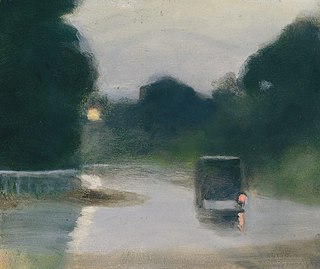 W
WAustralian tonalism was an art movement that emerged in Melbourne during the 1910s. Known at the time as tonal realism or Meldrumism, the movement was founded by artist and art teacher Max Meldrum, who developed a unique theory of painting, the "Scientific Order of Impressions". He argued that painting was a pure science of optical analysis, and believed that a painter should aim to create an exact illusion of spatial depth by carefully observing in nature tone and tonal relationships and spontaneously recording them in the order that they had been received by the eye.
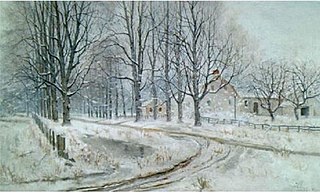 W
WWillis Seaver Adams (1844–1921) was a landscape painter who studied under James Abbott McNeill Whistler. He studied at the Royal Academy of Fine Arts in Antwerp, Belgium and was part of the Tonalism movement, which took place in the late 19th century.
 W
WAnne Wardrope Brigman was an American photographer and one of the original members of the Photo-Secession movement in America.
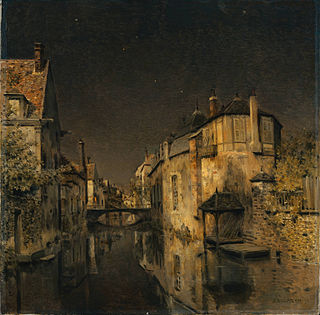 W
WJean-Charles Cazin was a French landscapist, museum curator and ceramicist.
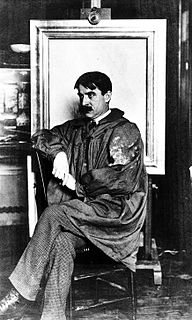 W
WRobert Bruce Crane was an American painter. He joined the Lyme Art Colony in the early 1900s. His most active period, though, came after 1920, when for more than a decade he did oil sketches of woods, meadows, and hills. He developed into a Tonalist painter under the influence of Jean-Charles Cazin at Grez-sur-Loing. Crane's mature works were nearly always fall and winter scenes. He usually painted in his studio in Bronxville, New York, where like many of the Tonalists he relied mostly on memories of his outdoor sketching experiences. Selected work can be found at the Florence Griswold Museum and the Newark Museum. He is a descendant of the Continental Congressman Stephen Crane.
 W
WLeon Dabo was an American tonalist landscape artist best known for his paintings of New York, particularly the Hudson Valley. His paintings were known for their feeling of spaciousness, with large areas of the canvas that had little but land, sea, or clouds. During his peak, he was considered a master of his art, earning praise from John Spargo, Bliss Carman, Benjamin De Casseres, Edwin Markham, and Anatole Le Braz. His brother, Scott Dabo, was also a noted painter.
 W
WAngel De Cora Dietz (1871–1919) was a Winnebago painter, illustrator, Native American rights advocate, and teacher at Carlisle Indian School. She was the best known Native American artist before World War I.
 W
WJoseph Rodefer DeCamp was an American painter and educator.
 W
WCharles Melville Dewey (1849–1937) was an American tonalist painter. He was born in Lowville, New York. Confined to his bed from his twelfth to his seventeenth year by a hip disease, he formed the poetic conception of nature which appears in his pictures. He studied in the schools of the National Academy of Design, New York (1874–76), and in Paris under Carolus-Duran, whom he assisted to paint a ceiling in the Louvre. In 1878 he returned to New York. Dewey's work has much highly individual, poetic sentiment and generally depicts subdued morning and evening effects. His landscapes in oil and water color are in many public galleries and private collections in the United States. Among his best are:Indian Summer and A November Evening (1904) Morning Bay of St.Ives and The Brook (1905) The Edge of the Forest The Harvest Moon and The Close of Day The Gray Robe of Twilight Old Fields
 W
WThomas Wilmer Dewing was an American painter working at the turn of the 20th century. Schooled in Paris, Dewing was noted for his figure paintings of aristocratic women. He was a founding member of the Ten American Painters and taught at the Art Students League of New York. The Freer Gallery of Art at the Smithsonian Institution has a collection of his works. He was the husband of fellow artist Maria Oakey Dewing.
 W
WCharles Warren Eaton (1857–1937) was an American artist best known for his tonalist landscapes. He earned the nickname "the pine tree painter" for his numerous depictions of Eastern White Pine trees.
 W
WHenry Farrer was an English-born American artist known for his tonalist watercolor landscapes and etchings.
 W
WGeorge Inness was a prominent American landscape painter.
 W
WWilliam Keith was a Scottish-American painter famous for his California landscapes. He is associated with Tonalism and the American Barbizon school. Although most of his career was spent in California, he started out in New York, made two extended study trips to Europe, and had a studio in Boston in 1871-72 and one in New York in 1880.
 W
WTheodore Nikolai Lukits was a Romanian American portrait and landscape painter. His initial fame came from his portraits of glamorous actresses of the silent film era, but since his death, his Asian-inspired works, figures drawn from Hispanic California and pastel landscapes have received greater attention.
 W
WXavier Martínez was a California artist active in the late 19th and early 20th century. He was a well-known bohemian figure in San Francisco, the East Bay, and the Monterey Peninsula and one of the co-founders of two California artists' organizations and an art gallery. He painted in a tonalist style and also produced monotypes, etchings, and silverpoint.
 W
WArthur F. Mathews was an American Tonalist painter who was one of the founders of the American Arts and Crafts Movement. Trained as an architect and artist, he and his wife Lucia Kleinhans Mathews had a significant effect on the evolution of Californian art in the late 19th and early 20th centuries. His students include Granville Redmond, Xavier Martinez, Armin Hansen, Percy Gray, Gottardo Piazzoni, Ralph Stackpole, Mary Colter, Maynard Dixon, Rinaldo Cuneo and Francis McComas.
 W
WDuncan Max Meldrum was a Scottish-born Australian artist and art teacher, best known as the founder of Australian tonalism, a representational painting style that became popular in Melbourne during the interwar period. He also won fame for his portrait work, winning the prestigious Archibald Prize for portraiture in 1939 and 1940.
 W
WFrank Bernard Nuderscher was an American illustrator, muralist, and painter of the American Impressionism style. He was called the "dean of St. Louis artists" for his leadership in the Missouri art community.
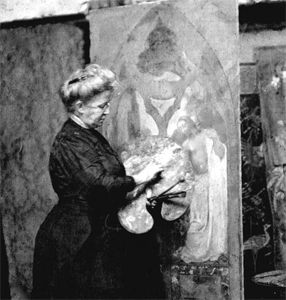 W
WClara Weaver Parrish was an American artist from Alabama. Although she produced a large amount of work in a wide array of media, she is best known for her paintings and stained glass window designs. She was inducted into the Alabama Women's Hall of Fame in 1983.
 W
WBruce Porter was an American painter, sculptor, stained-glass designer, writer, muralist, landscape designer, and art critic.
 W
WHenry Ward Ranger was an American artist. Born in western New York State, he was a prominent landscape and marine painter, an important Tonalist, and the leader of the Old Lyme Art Colony. Ranger became a National Academician (1906), and a member of the American Water Color Society. Among his paintings are, Top of the Hill, Corcoran Gallery of Art, Washington, D.C.; and East River Idyll, Carnegie Institute, Pittsburgh, Pennsylvania.
 W
WGranville Richard Seymour Redmond was an American landscape painter and exponent of Tonalism and California Impressionism. He was also an occasional actor for his friend Charlie Chaplin.
 W
WAlbert Pinkham Ryder was an American painter best known for his poetic and moody allegorical works and seascapes, as well as his eccentric personality. While his art shared an emphasis on subtle variations of color with tonalist works of the time, it was unique for accentuating form in a way that some art historians regard as modernist.
 W
WAllen Butler Talcott was an American landscape painter. After studying art in Paris for three years at Académie Julian, he returned to the United States, becoming one of the first members of the Old Lyme Art Colony in Connecticut. His paintings, usually landscapes depicting the local scenery and often executed en plein air, were generally Barbizon and Tonalist, sometimes incorporating elements of Impressionism. He was especially known and respected for his paintings of trees. After eight summers at Old Lyme, he died there at the age of 41.
 W
WDwight William Tryon was an American landscape painter in the late 19th and early 20th centuries. His work was influenced by James McNeill Whistler, and he is best known for his landscapes and seascapes painted in a tonalist style.
 W
WJames Abbott McNeill Whistler was an American artist active during the American Gilded Age and based primarily in the United Kingdom. He eschewed sentimentality and moral allusion in painting and was a leading proponent of the credo "art for art's sake". His signature for his paintings took the shape of a stylized butterfly possessing a long stinger for a tail. The symbol combined both aspects of his personality: his art is marked by a subtle delicacy, while his public persona was combative. He found a parallel between painting and music, and entitled many of his paintings "arrangements", "harmonies", and "nocturnes", emphasizing the primacy of tonal harmony. His most famous painting, Arrangement in Grey and Black No. 1 (1871), commonly known as Whistler's Mother, is a revered and often parodied portrait of motherhood. Whistler influenced the art world and the broader culture of his time with his theories and his friendships with other leading artists and writers.